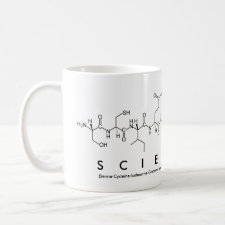
Authors: Wagdy HA, Dinc M, Mizaikoff B
Article Title: Synthesis of surface imprinted core-shell nanospheres for the selective determination of asparaginase.
Publication date: 2019
Journal: Analytical Methods
Volume: 11
Issue: (31)
Page numbers: 4034-4043.
DOI: 10.1039/C9AY00634F
Abstract: Asparaginase (ASPA) is an enzyme that is of crucial importance as an anti-neoplastic drug and in the food industry. In this study, core-shell surface imprinted nanospheres (MIP) have been synthesized for the selective extraction of asparaginase via a simple and effective method. A nanothin molecularly imprinted shell was prepared by co-polymerization of asparaginase and 3-aminophenylboronic acid monohydrate (APBa) serving as the functional monomer. This was followed by a polymerization initiated via ammonium persulfate (APS). Non-imprinted polymers (NIP) were prepared using the same procedure, but in the absence of the template. The effects of amine functionalities at the surface of silica and molar ratios of 3-aminopropyl-triethoxysilane (APTES) to tetraethyl orthosilicate (TEOS) (MR) were investigated for optimizing the synthesis and maximizing the imprinting efficiency. Silica spheres with sufficient amine functionalities showed a pronounced binding capacity (Q) of 14.45 ± 0.35 and 29.43 ± 0.34 mg g-1 polymer for NIP and MIP, respectively, achieving an imprinting factor of up to 2.04 ± 0.03. The obtained nanospheres were characterized using scanning electron microscopy (SEM), transmission electron microscopy (TEM), X-ray photoelectron spectroscopy (XPS), Brunauer-Emmett-Teller (BET) analysis for surface area analysis, and the Barrett-Joyner-Halenda (BJH) method for obtaining pore size and volume. The molecular recognition properties of the nanoparticles were investigated by evaluating their adsorption capacity, the binding kinetics, and their selectivity versus the corresponding NIP. Finally, imprinted core-shell nanospheres were successfully applied for the selective extraction of ASPA in its pure form, and in a real-world pharmaceutical preparation. These nanospheres are promising architectures for targeted drug delivery. Furthermore, they are of substantial interest in food treatment, as they may minimize acrylamide formation. Also, they could be applied in the quantification of ASPA in real samples
Template and target information: protein, asparaginase, ASPA



Join the Society for Molecular Imprinting

New items RSS feed
Sign-up for e-mail updates:
Choose between receiving an occasional newsletter or more frequent e-mail alerts.
Click here to go to the sign-up page.
Is your name elemental or peptidic? Enter your name and find out by clicking either of the buttons below!
Other products you may like:
 MIPdatabase
MIPdatabase









